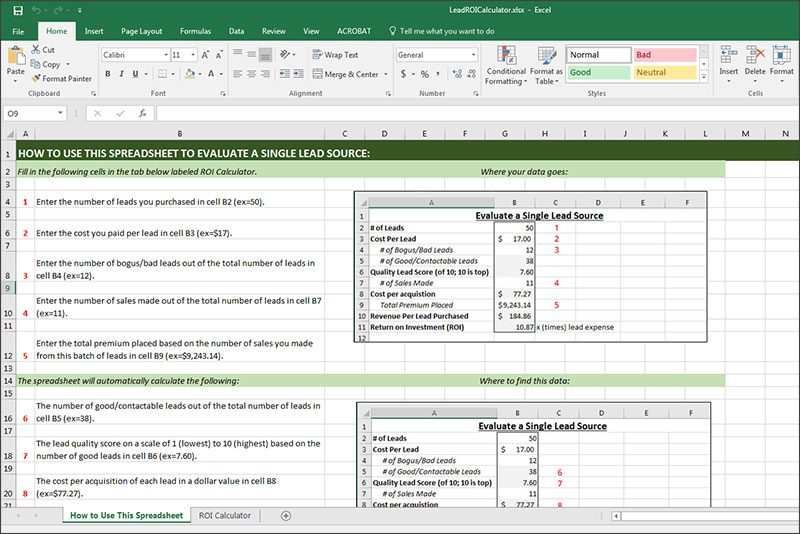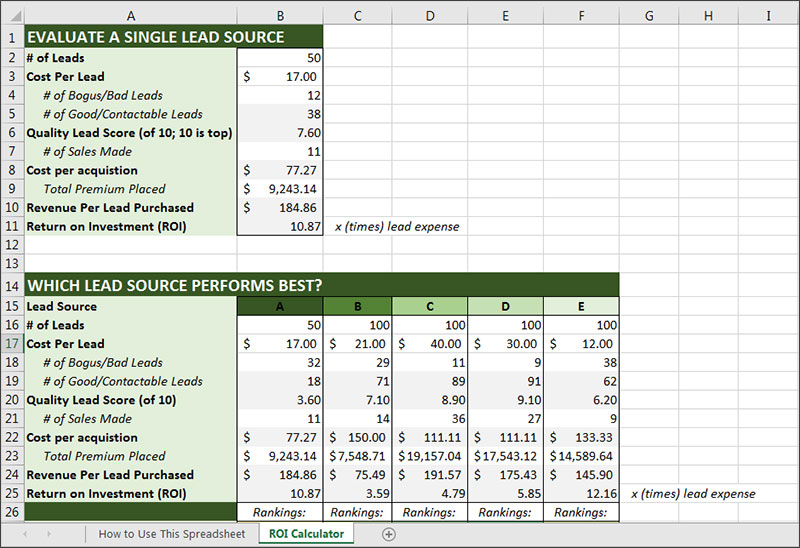
We hear from a lot of agents who want to become a life insurance direct marketer. These conversations usually happen one-on-one, but the more they occur, the more we realize a lot of agents are looking for this kind of guidance.
Here’s the catch.
Many of the agents we talk to aren’t ready to make this leap. No one has told them about the reality of direct marketing. As a result, their efforts are likely to fail.
They often ask for advice on marketing tools and website design, but those steps come further in the process than most agents realize. At this stage, you shouldn’t be thinking about a website URL or how to find a good web designer. You have a lot of groundwork to lay first—in fact, your success depends on it.
Here’s what Ryan Pinney has to say about becoming a direct marketer in today’s crowded marketplace – the considerations, the financial realities, and how long it may take before you see a profit.
Step 1: Define Your Market
There are eleven questions you need to answer long before you set up your eCommerce model:
- What market/niche am I going after?
- How large is the niche?
- Where do they currently get their services from?
- Who is the leader/top competitor in this niche?
- What is my differentiator? Why would a customer choose me over the competition?
- How will I generate leads from that market?
- What will it cost to generate those leads?
- Are there current sources that sell those leads? If so, how much do they cost?
- What is my anticipated ROI on those leads?
- How long will it take me to recoup my investment?
- Based on that estimate, how much capital do I need in reserve?
My experience in watching many other advisors try to start or build an online model has been filled with many failures and very few successes. This stems from the lack of planning and the “reality check” that needs to take place upfront to be successful. I’ll give you an example below.
Step 2: Calculate Your ROI
As a direct marketer in the U.S. market, I can purchase consumer life insurance leads for $15-20/ea. A well-run firm with a good process adhered to consistently should expect to see 1 paid case for every 10 leads.
Term life insurance has the highest quantity of available leads. The average premium for a term policy is between $900-1,000/yr. In the U.S., commissions on term insurance are heaped. In other words, they’re paid during the first year, with no additional renewals/commissions in subsequent years.
Common agent commission rates would be between 90-100% of the first-year premium.
An ROI would look like this:
Purchase 10 leads at $15 each = $150
Place 1 policy = $900 premium x 90% commission = $810
ROI = Revenue / Cost = 5.4x (i.e., you make 5.4 times what you paid)
Keep in mind that we’re talking about very high-quality leads here. Lower quality leads will perform worse and reduce the ROI. Still, on paper, that looks like an excellent ROI and a no-brainer to pursue, right?
Unfortunately, this simplified calculation misses several major pitfalls that will cause most advisors to fail.
Step 3: Calculate Your Break-Even Point
Here’s what the simplified ROI calculation above fails to take into consideration:
- The vast majority of policies are paid via monthly EFT. As such, most commissions are earned at a rate of 1/12 per month. If the total commission is $810, dividing that by 12 monthly payments = $67.50.
- The sales and underwriting process takes 45-90 days.
What do these changes do to your ROI? Your total ROI is still 5.4x, but it’s only realized over a 14-15-month period. Unfortunately, all your expenses were incurred during months 1-3, with the majority of that being the actual lead cost. This changes your break-even point, pushing it further into the future than you might expect.
Let’s go back to the numbers in the example above.
Purchase 10 leads at $15 each = $150
Sales & underwriting = up to 90 days
Place 1 policy = $900 premium x 90% commission = $810
Receive $67.50/month beginning approx. day 90
Break-even point when full $150 spent is recovered = $150 / $67.50 = 2.22 months + approx. 90-day delay = total of 5.22 months
That means the break-even point on the first 10 leads purchased is around month 5-6, by which point you’ve incurred an additional 6 months of lead and marketing costs that will follow the same pattern.
Basically, you can expect to operate at a loss for a minimum period of 12-18 months. And that only covers the costs of lead acquisition and sales. You still have the costs of infrastructure and personnel. Plus, as I mentioned earlier, this assumes you have a “well-run” firm with a “good process” – that’s where a CRM and marketing automation come in.
Step 4: Solidify Your Process
If you’re looking to get into the direct marketing space, I’d suggest a 3-step process:
- First, get your systems in place. Have you standardized, systematized, and automated your business as much as possible? Do you have a support staff or a digital BGA to help with processing?
- Next, build out your process using your current clientele. How will you contact leads? How will you follow up with them? What's your plan for continued marketing and education for both prospects and clients? Whether it’s a combination of phone, text, or email, you need to have these processes in place, tested, and refined before you apply them to your new purchased leads.
- Last, start to build out an eCommerce site. This should be a marketing site with embedded quoting/lead capture. You’ll also need someone to work with you to conduct effective search engine optimization, or SEO (a whole topic and specialty on its own). Without good SEO, you won’t be able to produce leads from your site. Remember, you can have an amazing website for eCommerce, but if no one goes there, it won’t matter how amazing it is. You can get a head start with our SEO and local SEO articles.
Free Download: ROI Calculator
You don’t have to wonder what your own ROI is. We created an Excel spreadsheet that will calculate it for you! Just enter data like the average amount you paid for a lead and your average commission, and the spreadsheet will do all the calculating for you.
Download the ROI calculator nowThe download is an Excel spreadsheet with two tabs. The first tab provides a complete explanation of how to use the spreadsheet:

The second tab contains the calculator, where you'll enter your data and get your results:

Once you enter your data, the spreadsheet will also turn that data into a visualization to give you instant insight into which lead source is the most profitable for you:
 Download the ROI calculator now
Download the ROI calculator now
There are two important points to keep in mind as you use this calculator. The sales process includes two variables that aren't consistent and can be difficult to account for.
- First, the spreadsheet doesn't include the actual cost of making the sale or processing the business. It's only looking at the value of the individual lead. If you have a fixed employee cost required to make the sale, you may want to build on this spreadsheet to add that calculation.
- Second, our spreadsheet doesn't track the amount of time it took to make a sale. As you know, some sales take 5 minutes, for example, while others take 8 weeks. Keep this in mind when evaluating the rankings of your lead sources.
